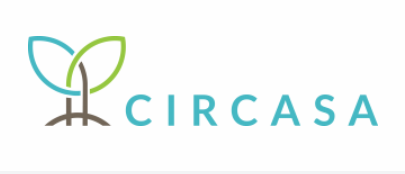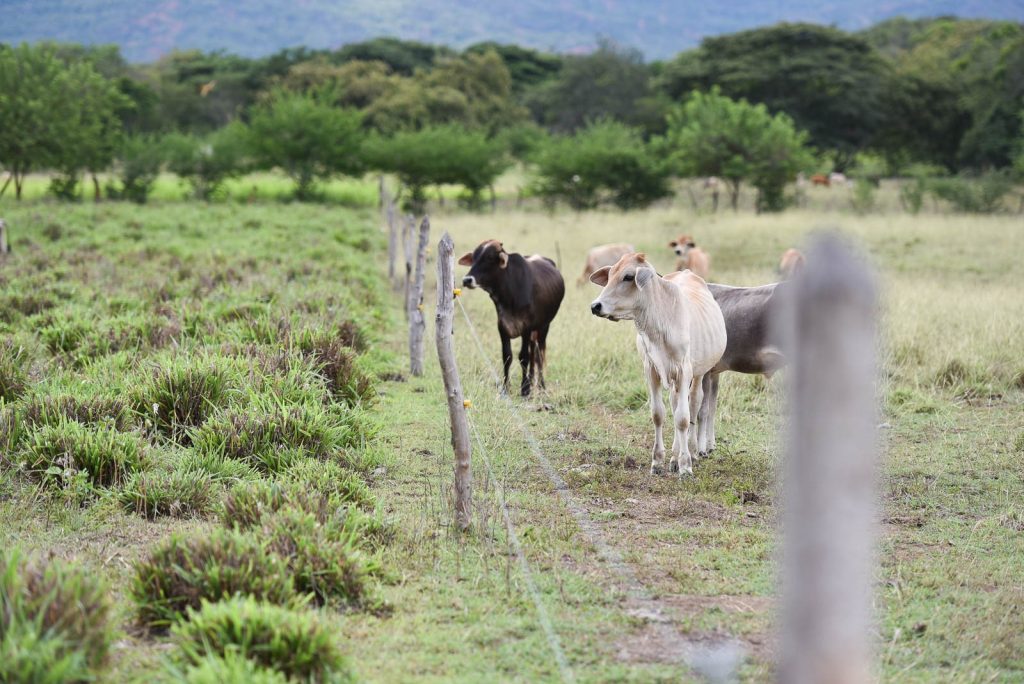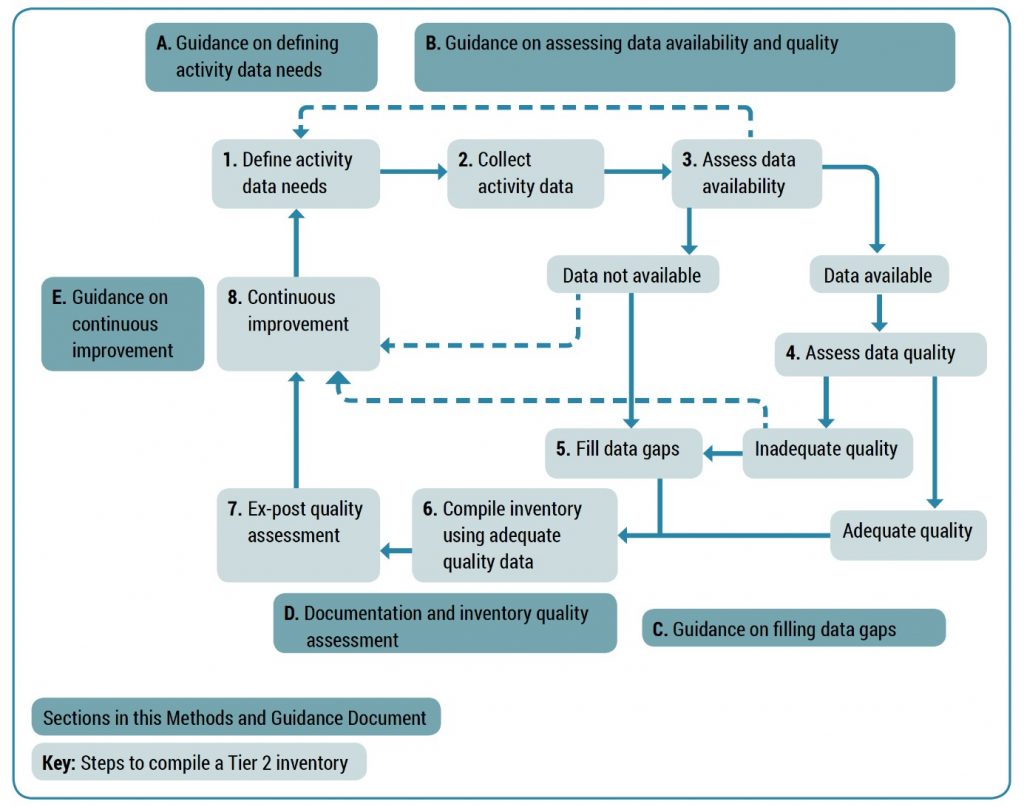The latest issue of the Livestock Research Group (LRG) newsletter is now available.
In this edition, you can read about:
- The introduction of the new LRG Co-chair – Richard Dewhurst
- LRG priorities for 2020/2021
- New tools for measuring, reporting and verifying livestock greenhouse gas emissions and mitigation
- LRG support to the Intergovernmental Panel on Climate Change (IPCC)
- Feature story from a LEARN Award recipient
Issue 3 of the Inventories and Nationally Determined Contributions (NDC) Support Network Newsletter of the Global Research Alliance on Agricultural Greenhouse Gases (GRA) is now available.
Issue 3 of the Inventories and Nationally Determined Contributions (NDC) Support Network of the Global Research Alliance on Agricultural Greenhouse Gases (GRA) features new hill slope emission factors, articles on Global Research Alliance on Agricultural Greenhouse Gases (GRA) Inventory and NDC Network activities occurring in Africa, Spain, Argentina, Uruguay, Australia, New Zealand and the United States. This issue provides information on a newly established GRA scholarship programme NZ-GRADS, designed for PhD candidates to study at New Zealand institutions, and stories from PhD students in the CLIFF-GRADS programme.
Contributions and feedback are welcomed, please contact one of the Network leads with any relevant research, opportunities or country inventory and NDC updates for the next issue.
Aarhus University seeks a highly motivated postdoc for a three-year position to work on activities related to reducing greenhouse gas emissions from agricultural systems.
Click here for more information and to apply.
Applications close 1 June 2020
The Coordination of International Research Cooperation on Soil Carbon Sequestration in Agriculture (CIRCASA) has released its April 2020 newsletter.
This edition includes information about:
- CIRCASA project and GRA – Integrative Research Group meetings
- CIRCASA participation to the COP25
- Other news and initiatives
Read the newsletter here

The fifth issue of the Croplands Research Group (CRG) newsletter is now available!
In this edition you can read about:
- Grazing Iberian dehesas: carbon sequestration offset livestock emissions.
- Agroforestry and wildfires.
- Special issue on the role of agroforestry on mitigating and adapting agricultural systems to climate change in the Mediterranean areas of Europe.
- Special issue on the role of conservation agriculture on reducing greenhouse gas emissions.
- AFINET handbook
- Upcoming events
Read the newsletter here.
The fourth issue of the Croplands Research Group (CRG) newsletter is now available!
In this edition you can read about:
- The United Nations Climate Change conference.
- Agroecology: a transformative approach that provides alternatives to conventional agriculture and foster transition to sustainable food systems.
- Cornell University’s climate smart farming program.
- Biochar: a tool to mitigate greenhouse gases.
- Final events of the AFINET project: fostering transition to agroforestry systems in Europe.
- Interesting events, including upcoming conferences, workshops, and much more.
Read the newsletter here.
The International Symposium on Climate-Resilient Agri-Environmental Systems is meeting in Dublin from 3-6 November 2020.
The call for abstracts is open for submission here.
It will be a great opportunity to meet and greet with multidisciplinary experts, as well as gather and exchange ideas and thoughts on how to combat climate change and protect the environment.
Read more here.
A Special Issue of the Soil Science Society of America Journal will be accepting papers on the role of conservation agricultural practices on reducing greenhouse gas emissions.
The Guest Editors of this Special Issue are Craig Drury (Agriculture & Agri-Food Canada, Ontario Canada), Chuck Rice (Kansas State University, Kansas USA) and Jane Johnson (United States Department of Agriculture, Minnesota, USA). Thus far we have commitments for 8 papers and we are hoping to receive 15-20 papers in total. The conservation agriculture practices that have been identified so far include conservation tillage, cover crops, crop rotation, residue management and irrigation.
If you are interested in submitting a paper please contact Craig Drury ([email protected]) with a title and a list of co-authors by April 30, 2020.
Paper submission deadline: September 30, 2020
New publication can help countries improve the accuracy of livestock emission estimates.
92 developing countries included livestock-related emissions as a target for mitigation in their Nationally Determined Contributions (NDCs). One of the biggest challenges to achieving mitigation in the sector is tracking emissions, for which national inventories are a key tool. However, systems for measuring and monitoring changes in livestock greenhouse gas emissions are under-developed in many countries. Challenges in compiling data about the activities related to livestock management is a primary barrier. Currently, most developing countries use the IPCC Tier 1 approach which can only reflect change in livestock numbers. Tracking reductions achieved through improvements in management and productivity requires a Tier 2 approach, which uses activity data to estimate emission factors. The problem is that Tier 2 approaches require more activity data, and a lack of good quality activity data is often perceived as a barrier to adopting a Tier 2 approach.

A new guidebook, jointly developed by the GRA, the CGIAR Research Program on Climate Change, Agriculture and Food Security (CCAFS), the Food and Agriculture Organization of the United Nations (FAO) and UNIQUE forestry and land use GmbH, provides practical methods for countries to compile the activity data used to implement the IPCC Tier 2 methodology. The purpose is to support countries to improve the accuracy of the livestock emission estimates in national GHG inventories, and thus enable countries to better set their NDC mitigation targets, and measure and report progress.
The guidebook provides an 8-step framework for countries to compile activity data (see Figure 1 below) and it helps answer questions such as how to define what data is needed; how to collect the data needed, and how to assess data availability and quality; how to fill data gaps; how to document the inventory and assess inventory quality; and how to plan for continuous improvement.

Each section contains:
- Practical guidance on the compilation of activity data
- Overview of related IPCC good practices guidance
- Useful tools for implementing the practical guidance
- Methodological guidance that explains issues affecting decisions about how to compile activity data
- Examples of how to implement the practical guidance
- Links to additional resources
The guidebook provides practical methods for assessing data availability and data quality, and for systematising available data and filling data gaps using methods consistent with the IPCC guidelines. Through worked examples of gap filling methods, the guidebook shows that an initial Tier 2 inventory can be compiled and used to identify priorities for data collection as part of a continuous improvement process.
The guidance was compiled around the same time as Kenya developed its first Tier 2 inventory for dairy cattle with support from the GRA, and several examples in this guidance are drawn from that experience. The guidebook is already being road-tested in other countries, and the experiences gained will contribute further methods and examples.
This guidebook fills a long-standing gap in learning resources dedicated to improving livestock greenhouse gas inventories. It shows that the lack of activity data is often more a perceived rather than a real barrier to adopting a Tier 2 approach. When first adopting a Tier 2 approach for livestock greenhouse gas emissions, there are few countries – including developed countries – where all the necessary livestock activity data are readily available and of good quality. Using the tools and methods explained in this guidebook, countries will be able to compile an initial Tier 2 inventory that is consistent with the IPCC guidelines, and prioritize the use of resources for continual improvement over time. This will help countries to comply with the agreements on transparency under the Paris Agreement, and will provide a better basis for identifying mitigation options and tracking change in emissions from the livestock sector.
To download the guidebook, see here.
Read more:
- Report: Measurement, reporting and verification of livestock GHG emissions by developing countries in the UNFCCC: current practices and opportunities for improvement.
- Summary: Livestock development and climate change: the benefits of advanced greenhouse gas inventories
- Resource portal: Tier 2 inventory approaches in the livestock sector: a collection of agricultural greenhouse gas inventory practices
- Website: MRV Platform for Agriculture
The Livestock Activity Data Guidance (L-ADG) was developed through a collaboration of the GRA, the FAO, UNIQUE forestry and land use GmbH and CCAFS.
Call for abstracts for a symposium on animal agriculture emission measurement technologies. This event will take place in San Francisco (August 16-20, 2020).
For further information, click here.
Deadline for abstract submission is 20 April 2020
The University of Turin (UNITO) have a PhD position open to work on the EU H2020 project ETN FertiCycle which has just started. The project will train 15 PhD students in the field of developing new processes for production of bio-based fertilisers, recycling wasted resources and estimating their market potential. Applications should be submitted by email.
Further details on the position can be found here.
Applications close 14 April 2020
The Position
Professor / Associate Professor / Tenure Track Associate Professor in Ruminant Nutrition
For further information click here
For additional questions please contact:
Birgit Nørrung (Head of Department)
University of Copenhagen
Department of Veterinary and Animal Sciences
Email [email protected]
Applications close 29 March 2020, 11.59pm CET
